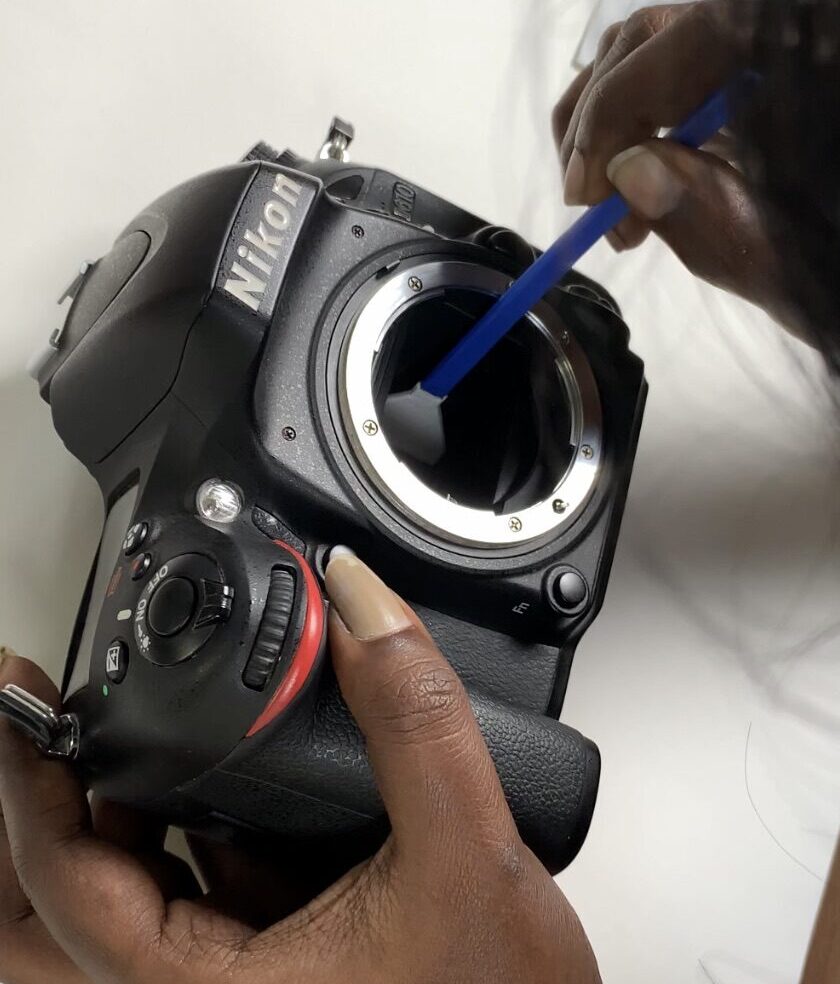One of the most frustrating experiences for photographers is when their camera refuses to focus properly. Whether you’re capturing portraits, landscapes, or action shots, focus issues can ruin an otherwise perfect photo. In this guide, we’ll explore the common causes of focus problems and how to fix them. By the end, you’ll have a clear understanding of how to troubleshoot autofocus issues and ensure your photos are always sharp.
Common Causes of Autofocus Problems
1. Incorrect Focus Mode
- Single AF vs. Continuous AF: Single autofocus (AF-S or One-Shot AF) locks focus when the shutter button is pressed halfway. This mode is great for still subjects but can cause problems if your subject moves. Continuous autofocus (AF-C or AI Servo) continually adjusts focus as the subject moves, making it ideal for action shots. Ensure you’re using the correct mode for your subject.
- Manual Focus: Accidentally switching to manual focus can lead to blurry photos. Double-check that your camera is set to autofocus (AF) mode.
- Lens Issues
- Dirty Lens: Smudges, fingerprints, or dust on your lens can interfere with autofocus. Regularly clean your lens with a microfiber cloth and a blower.
- Incompatible Lens: Some third-party lenses may not communicate perfectly with your camera, leading to autofocus problems. Ensure your lens is fully compatible with your camera body.
Follow the below post for more..

- Low Light Conditions
- Difficulty Focusing in Low Light: Cameras struggle to focus in dim environments because there isn’t enough contrast for the autofocus system to lock onto. Using an external light source or switching to manual focus can help in these situations.
- Use AF Assist Beam: Most cameras have an AF assist beam that emits a light to help focus in low light. Make sure this feature is enabled in your settings.
- Subject Movement
- Moving Subjects: Fast-moving subjects can cause focus issues if you’re using single-shot AF. Switch to continuous AF mode to track moving subjects more effectively.
- Motion Blur: Even if your camera focuses correctly, a slow shutter speed can result in motion blur. Increase your shutter speed to freeze the action.
- Depth of Field (DoF)
- Shallow DoF: When shooting with a wide aperture (e.g., f/1.8), the depth of field is very shallow, making it harder to keep the entire subject in focus. Consider stopping down to a smaller aperture (e.g., f/5.6) to increase the depth of field.
- Focus and Recompose: If you focus and then recompose your shot, you may inadvertently shift the plane of focus. To avoid this, use your camera’s focus points or focus lock function.
- Back or Front Focus
- Focus Calibration: Sometimes, a lens can have a slight back or front focus, meaning it focuses slightly behind or in front of the intended subject. Many cameras allow you to fine-tune autofocus for each lens to correct this issue.
Steps to Fix Autofocus Issues
- Clean Your Lens and Camera Sensor
- Regularly clean your lens with a microfiber cloth. If the issue persists, consider cleaning your camera’s sensor or having it professionally serviced.
- Check Camera Settings
- Reset to Default: Sometimes, complex custom settings can cause focus issues. Resetting your camera to its default settings can help identify the problem.
- Enable Focus Assist Features: Ensure features like focus peaking (if available) or AF assist beam are enabled to help with focus.
- Use the Right Focus Mode
- Switch to continuous AF for moving subjects and single AF for stationary ones. For tricky lighting conditions, manual focus may be the best option.
- Update Camera Firmware
- Manufacturers often release firmware updates that improve autofocus performance. Check your camera manufacturer’s website for updates.
- Test with a Different Lens
- If you’re still experiencing focus issues, try using a different lens to see if the problem persists. This can help determine if the issue is with the lens or the camera body.
- Calibrate Your Lens
- If your camera allows for autofocus micro-adjustment, use a calibration tool to fine-tune your lens’s focus accuracy. This can solve back or front focus issues.
Check this post on Gadgets to improve Focus
Additional Tips for Perfect Focus
- Use Live View Mode: If you’re struggling with focus, switch to live view mode. Most cameras provide contrast-detect autofocus in live view, which can be more accurate than phase-detect autofocus, especially in challenging conditions.
- Practice Focus Techniques: Learn how to use focus and recompose, back-button focus, and other advanced focusing techniques to improve your photography skills.
- Invest in Quality Gear: Higher-end lenses often provide faster and more accurate autofocus. Investing in good quality lenses can significantly improve your focus reliability.
FAQs About Camera Focus Problems
Q: Why does my camera keep hunting for focus?
A: This often happens in low light or low-contrast scenes. Try focusing on a point with more contrast or using manual focus.
Q: Can a UV filter affect autofocus?
A: In most cases, a UV filter won’t affect autofocus. However, low-quality filters can sometimes cause issues, so it’s best to use high-quality filters.
Q: My camera used to focus fine, but now it doesn’t. What changed?
A: Consider recent changes, such as new lenses, firmware updates, or even environmental factors like humidity. Try resetting your camera settings or cleaning your gear.
Conclusion
Autofocus issues can be a real headache, but with the right knowledge and tools, you can troubleshoot and fix most problems quickly. Remember to regularly maintain your camera and lens, use the appropriate focus mode, and practice different focusing techniques. By following the tips and suggestions in this guide, you’ll be on your way to consistently sharp and focused photos.
This blog post is designed to provide photographers with actionable advice on resolving autofocus problems, ensuring your images are always crisp and clear. If you continue to experience issues, it may be worth consulting a professional or considering an upgrade to your gear. Happy shooting!
Learn more about Fluntro Apps for Photographers
1. EXIF VIEWER BY FLUNTRO – LEARN MORE..
VIEW, EDIT, REMOVE EXIF METADATA FOR PRIVACY
Knowing whether an app contacts external servers is equally important. It helps you understand where your data is going, who might have access to it, and how it affects your device’s performance and security. By regularly checking your app privacy reports, especially on iOS, you can stay informed about these connections and take action to protect your data.
By being proactive about your digital privacy, you can navigate the online world with confidence, ensuring your personal information stays safe and secure.
Appstore link :- https://apps.apple.com/us/app/exif-viewer-by-fluntro/id944118456

EXIF metadata is an invaluable resource for photographers at all skill levels. It provides insights into your photography, helps you troubleshoot issues, and offers a means of proving authorship and copyright. So, the next time you capture that breathtaking shot, don’t forget to delve into the EXIF metadata – it’s a treasure trove of information waiting to be explored, and it might just be the key to unlocking your photography potential.
2. PHOTOS SEARCH BY FLUNTRO
YOUR ULTIMATE PHOTO DISCOVERY COMPANION!
Photos Search app takes image searching to a whole new level by allowing you to search for text within photos effortlessly. Unleash the potential of your visual content and discover a seamless way to find and organize your images based on the words they contain. Whether you’re a professional photographer, an art enthusiast, or simply someone who loves exploring beautiful imagery, PhotoSearch is here to make your search for photos a delightful and hassle-free experience.
AppStore Link: https://apps.apple.com/app/photos-search-by-fluntro/id6471649312

Get two apps by Fluntro Team :Exclusive Bundle Offer

“Exif Viewer” for $2.99 and “Photos Search” for $4.99
Just for $5.99 instead of $7.98

Pingback: Top 10 Must-Have Gadgets to Fix Autofocus Issues and Improve Focus Accuracy - EXIF Viewer by Fluntro